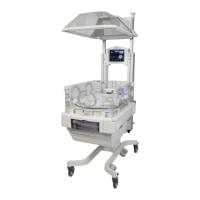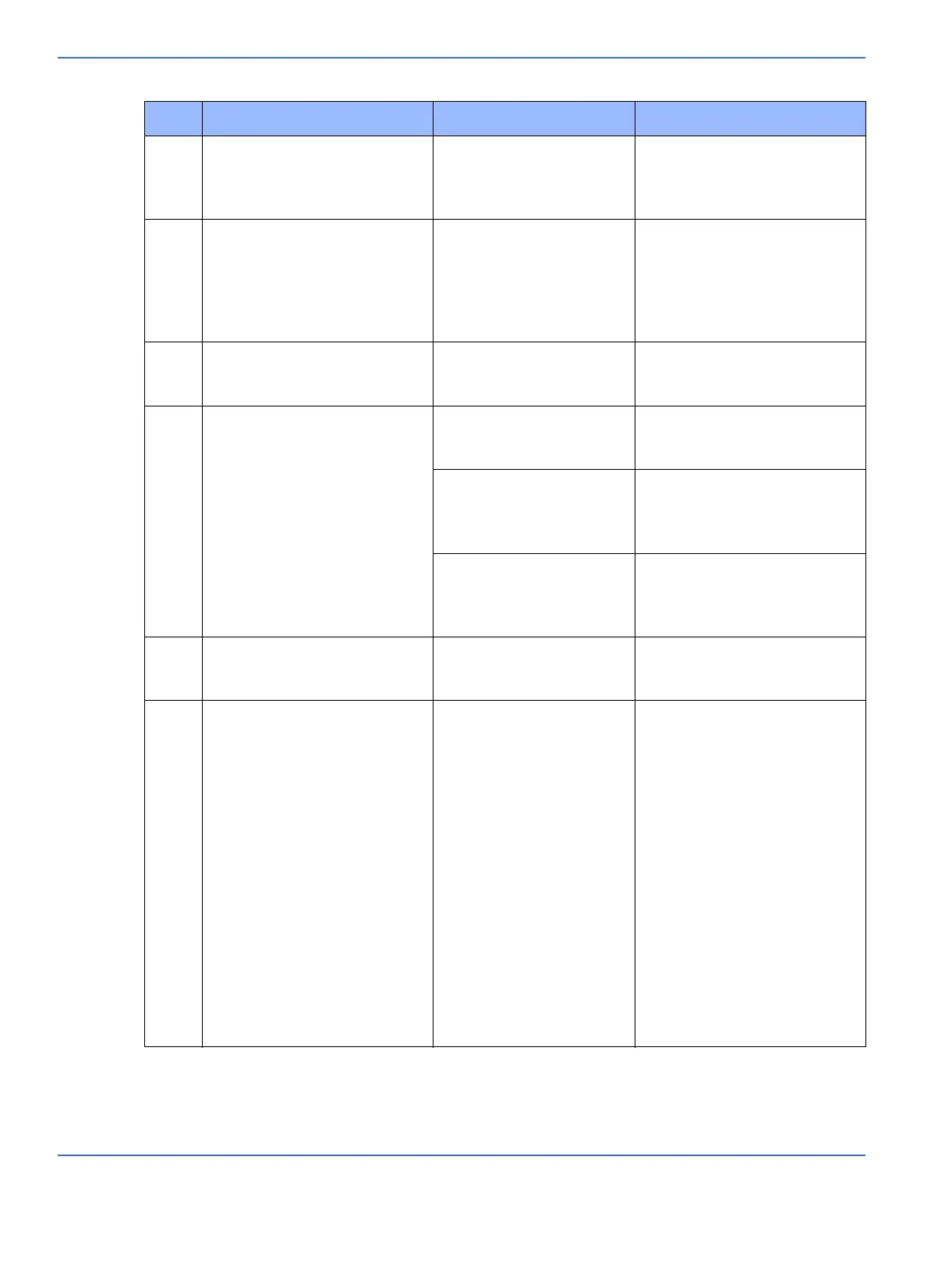Chapter 5: Troubleshooting
Troubleshooting Symptoms
5-8 Service Manual
S31 Air Temp >38C or Air Temp
>40C alarm activated even
though compartment temp is <
alarm.
Alarm is not designed to
automatically reset after
alarm condition is
resolved.
Push the operator interface
alarm silence button to clear
the alarm.
S32 Bed warms up very slowly, may
not reach set temperature.
One of the bed heater
cartridges is defective.
Feel the heat sink to see if one
side is cooler than the other.
Use care, since the heat sink
can reach temperatures as
great as 121C (250F). Replace
the cartridge on the cool side.
S33 Device always powers up in
Service screen mode.
Incorrect dipswitch setting Check position 8 on the control
board dipswitch. Should be set
to Off position.
S34 Screen refreshes every few
seconds while scale is
attached.
Defective circuit on control
board (Unbiased RS485
bus during idle state)
Replace control board.
Defective scale Disconnect scale connector at
probe panel. Power cycle the
device. If error clears replace
the scale.
Defective scale harness Disconnect scale harness from
J7 on the control board. Power
cycle the device. If error clears
replace the scale harness.
S35 Noise from speaker on power
down.
Microprocessor does not
hold reset during power
off.
If noise is excessive, replace
control board.
S36 Fan is running in high speed
but no FAN ALWAYS IN HIGH
SPEED message and the Air
Boost is not on.
This is normal condition for
90 minutes after power up,
45 minutes after transition
from open to closed bed
mode, and during other
conditions as determined
by the heat control
software.
To check HIGH and LOW fan
speed, power up the device.
After the power up sequence is
complete, touch and activate
the Air Boost icon. Touch and
hold Alarm Silence for more
than five (5) seconds.
The Air Boost icon will turns off
and the fan switches to low fan
speed. Now Air Boost function
is fully operational and will
toggle between high and low
fan speed.
Important: Change in the Air
Boost Icon will only change the
fan speed if this procedure is
followed.
ID Symptom Possible Cause(s) Action(s)

